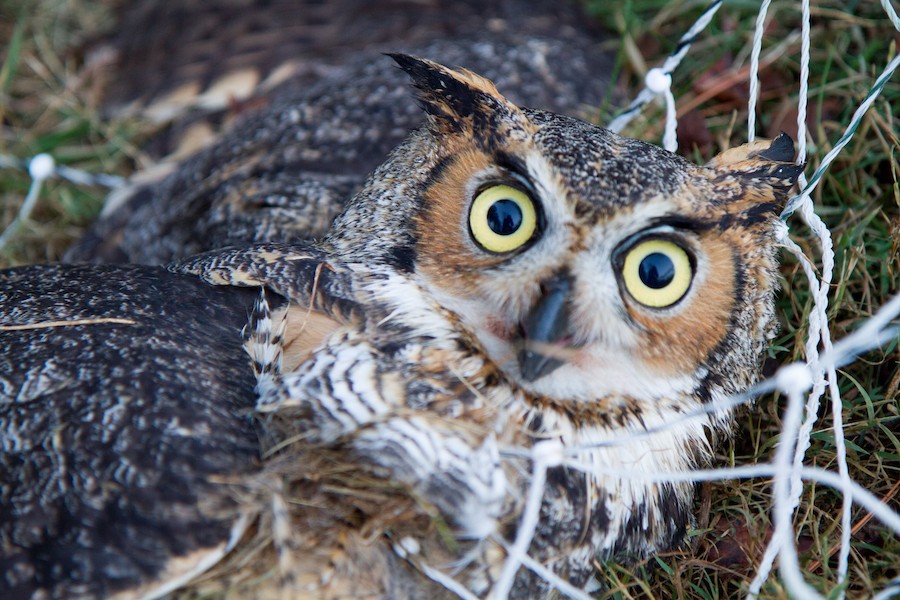By Ashley Peele

Great Horned Owl Bubo virginianus © Bill Detmer
This weekend marks the start of Christmas Bird Count (CBC) season for many counties in Virginia, which also means that we’ve arrived at the start of the breeding season for one of our most impressive Virginia species, the Great-Horned Owl (GHOW). In fact, reports of territorial pairs of GHOWs are already coming in for counties in the mountain-valley region of Virginia.
For those of you participating in a CBC or those of you who happen to detect vocalizing owls, here are a few things to know about how to report these observations to the VABBA2.
- Enter GHOW observations as an incidental checklist or a complete checklist, if conducting a strictly nocturnal survey. Observers are unlikely to detect any other non-breeding species on nocturnal surveys, thus these can be entered as complete checklists to capture the nocturnal survey effort. However, incidental observations of Great-Horned Owls made in the daytime, should be logged as incidental observations to avoid adding a long list of non-breeding species into the Atlas portal.
- Territorial hooting, or the classic, deep-toned “who-hoo-ho-oo or who-ho-o-o, whoo-hoo-o-o, whoo” can be coded as S or Singing Male (or female!). Males are likely on territory and if unmated, will be advertising their presence to females and rival males alike.
- Males and females will duet, taking turns giving the classical hoots described above. Detection of a duetting pair can be coded as P, Pair in Suitable Habitat. Note: Interestingly, females typically give a 6-7 note call and males respond with a 5-note all.
- Check out Diane Lepkowski’s recent recording of a pair of Great-Horned Owls duetting in Harrisonburg! https://macaulaylibrary.org/asset/127433331
- Egg-laying dates: Late-December through early March, but is variable based on the climatic conditions in a given season.
If you’re interested in getting more information on our earliest breeding birds, check out last year’s story, Holiday Birding Can Include Breeding Birds.
For more general information on nocturnal birding for the Atlas project, check out Atlasing After Dark.

